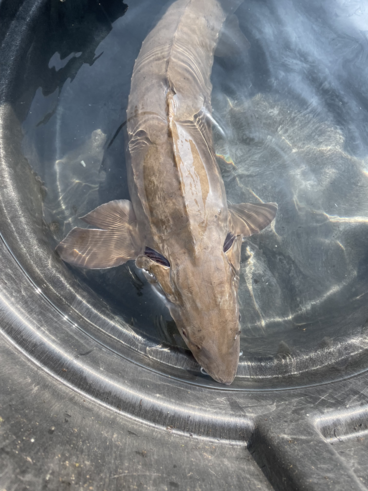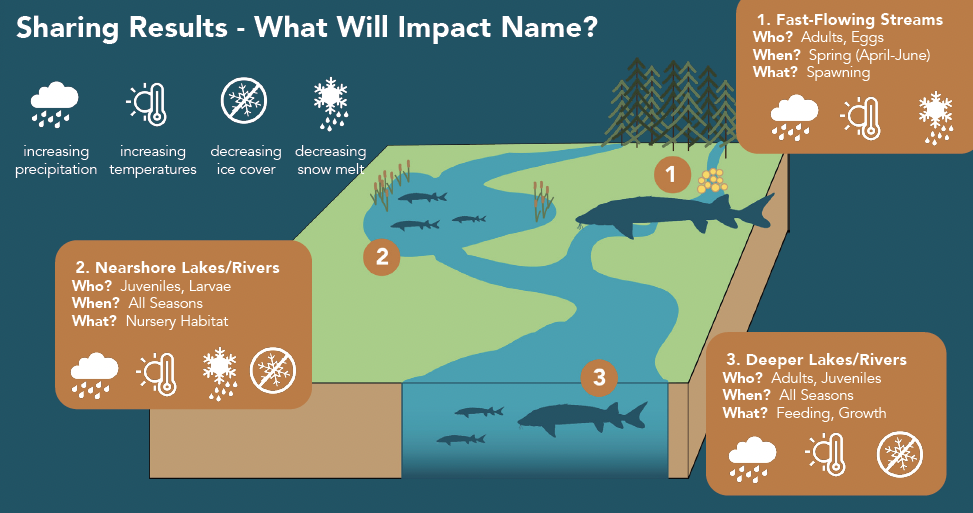
Lake sturgeon, called name (nuh-may) in Ojibwe, are a fish of strong subsistence, cultural, and spiritual importance for many Tribal nations. But these fish are especially vulnerable to climate change given their long lifespans and historical mass declines. In response to concerns from Tribal leadership in the Midwest region, researchers from the MW CASC and the Great Lakes Indian Fish & Wildlife Commission are exploring how climate change may affect lake sturgeon.
This project aims to synthesize documented and projected potential effects of climate change on lake sturgeon; synthesize Indigenous perspectives and experiences with lake sturgeon in a changing climate; and identify information needs, future research avenues, and potential adaptation options to support lake sturgeon. Results of this ongoing research will help inform fisheries management under future climate conditions and Endangered Species Act listing decisions while investigating Tribal communities' concerns.
As part of the research process, the team has held conversations with biologists, natural resource directors, historic preservation officers, and managers from Tribal nations and organizations across the region. Foundational aspects of this collaborative approach include:
- Building a core internal team to develop processes and ensure success
- Recognizing and supporting data and knowledge sovereignty
- Communicating the research process and how information will be used with participants, including offering multiple checkpoints for feedback
- Building time and flexibility into the process to meet participant capacity
In a publicly-available USGS Open File Report, researchers explained that potential impacts on lake sturgeon include both positive and negative effects depending on a variety of factors. Lake sturgeon span multiple habitats during their long lifespans, and climate change is projected to strongly affect the suitability of these habitats through increasing precipitation and temperatures and decreasing ice cover and snowmelt. Changes in flow timing and amount can affect movement to spawning and nursery sites, and increased water temperatures are likely to affect species activity patterns, survival, and prey availability. In addition to this report, the research process and findings have been summarized in a fact sheet.

The MW CASC is sincerely grateful to the many representatives from Tribal Nations and organizations whose collaboration made this work possible, including those at the 1854 Treaty Authority, Bay Mills Indian Community, InterTribal Council of Michigan Inc., Keweenaw Bay Indian Community, Little River Band of Ottawa Indians, Little Traverse Bay Bands of Odawa Indians, Match-E-Be-Nash-She-Wish Band of Pottawatomi Indians, Menominee Indian Tribe of Wisconsin, and Red Cliff Band of Lake Superior Chippewa.
